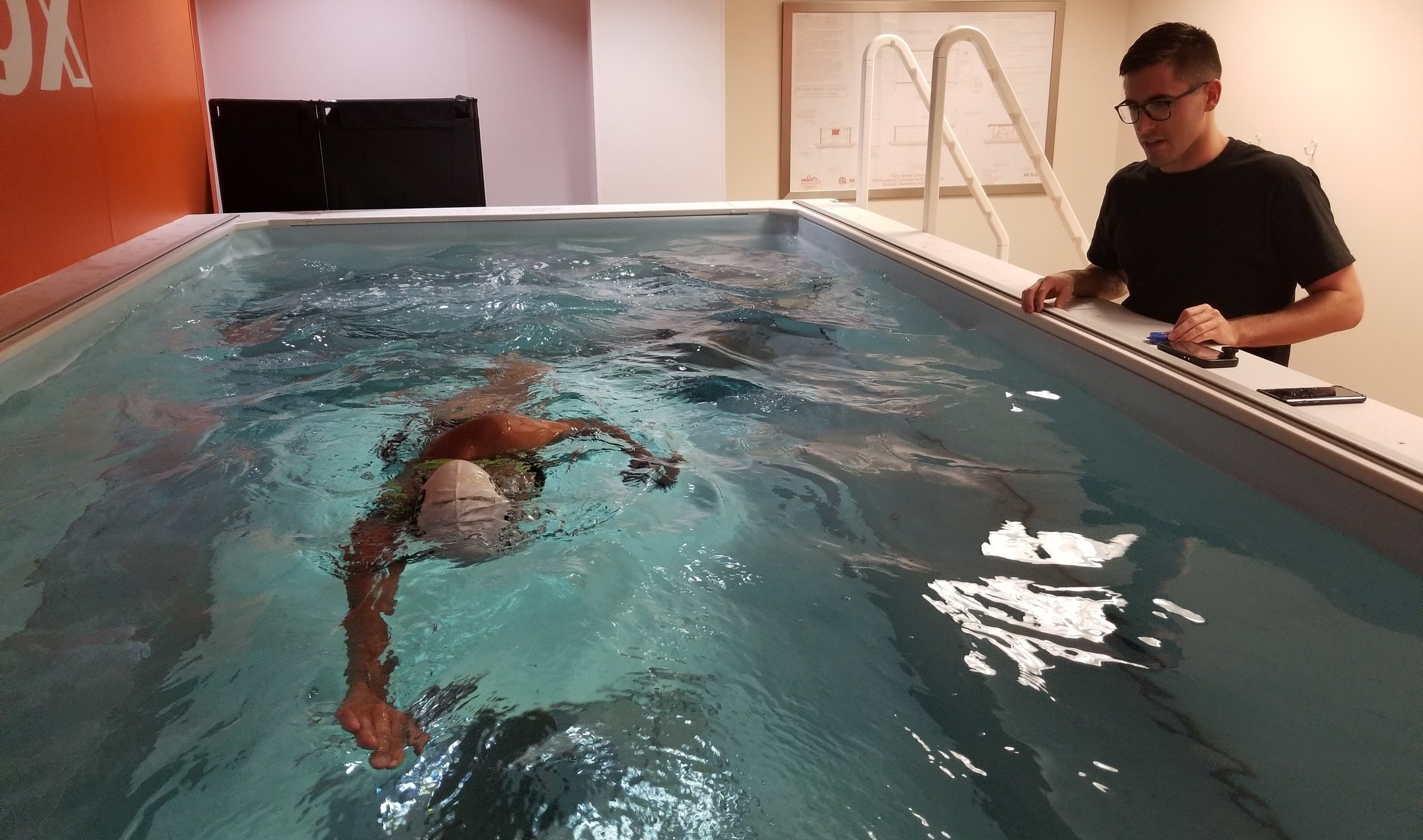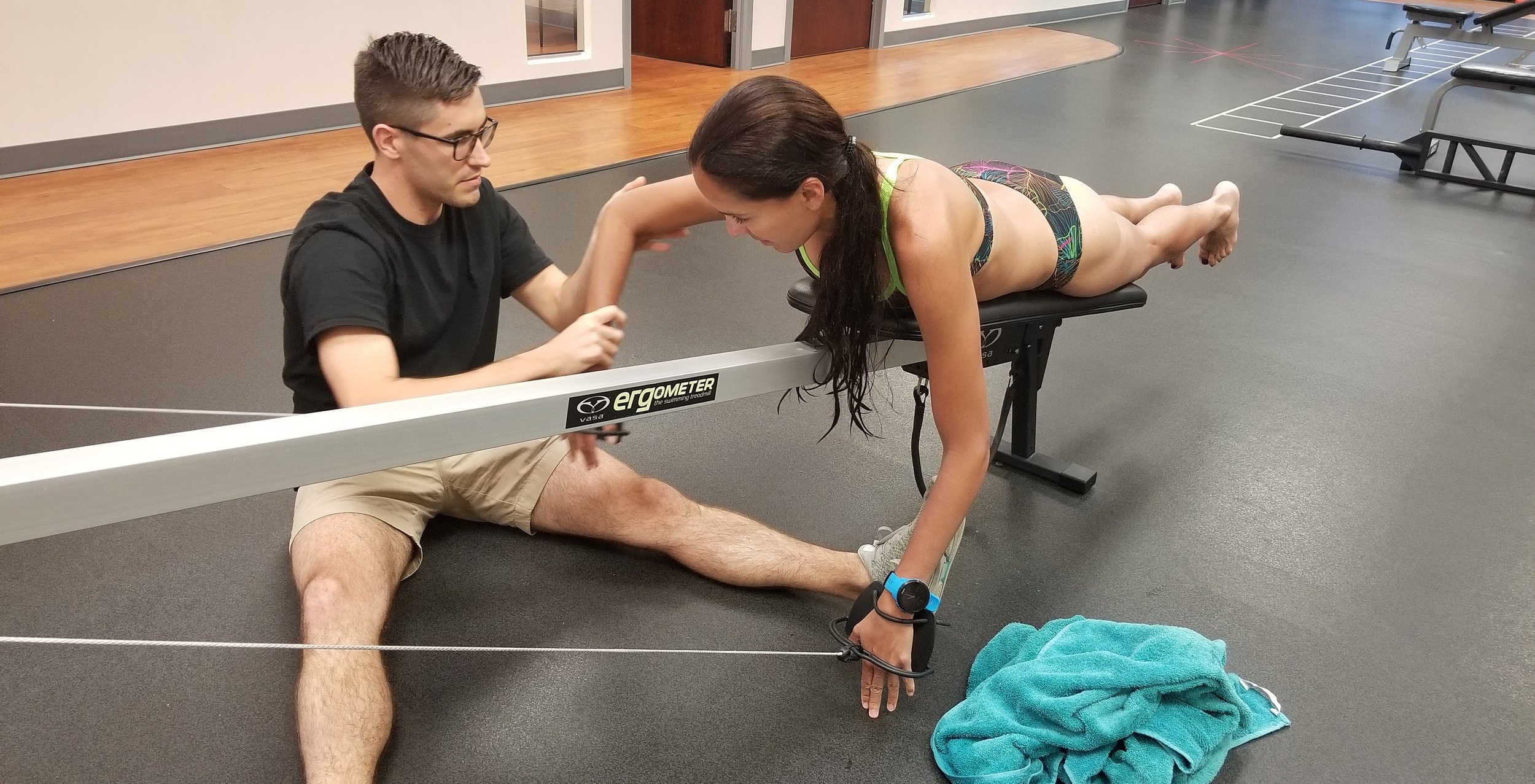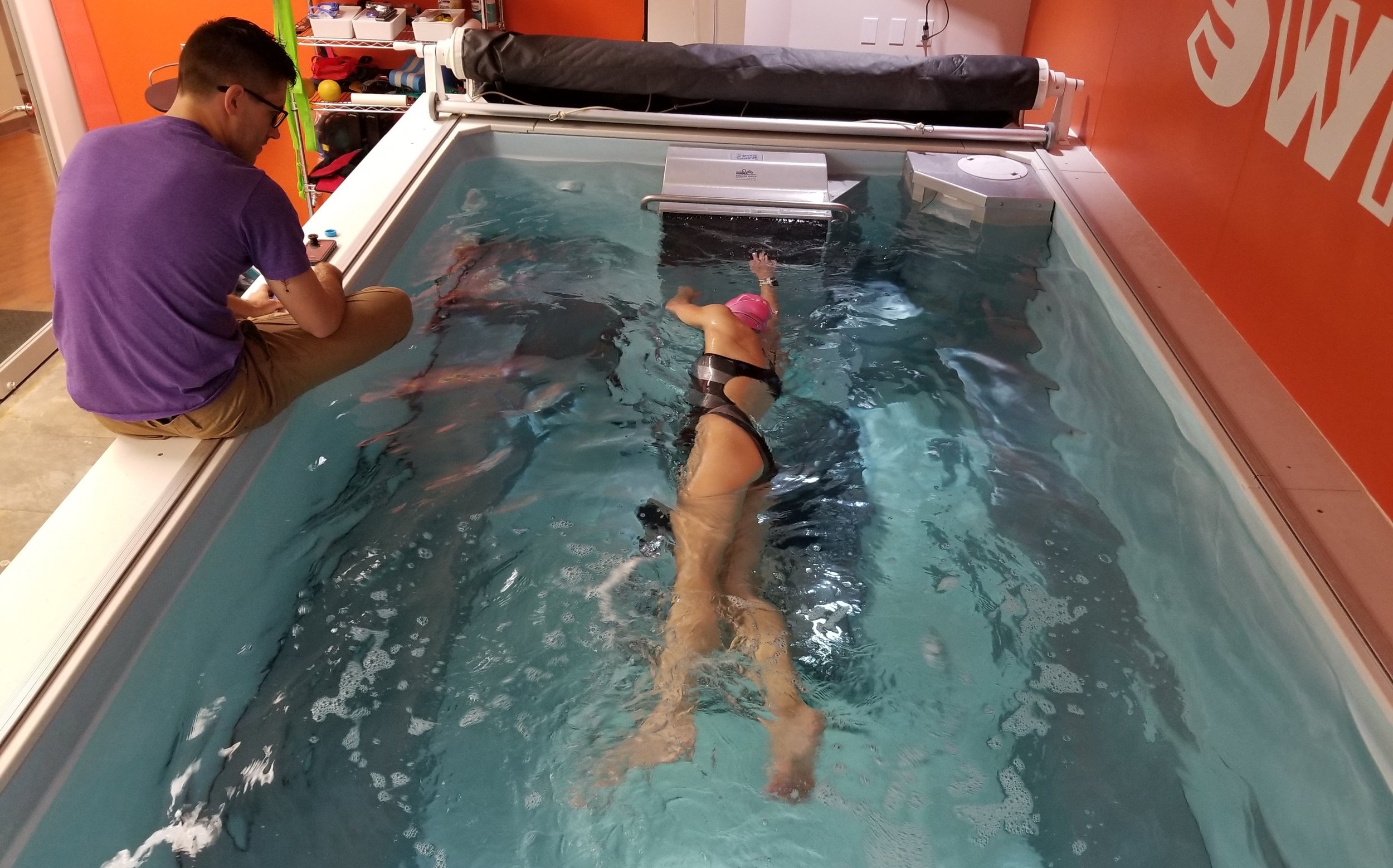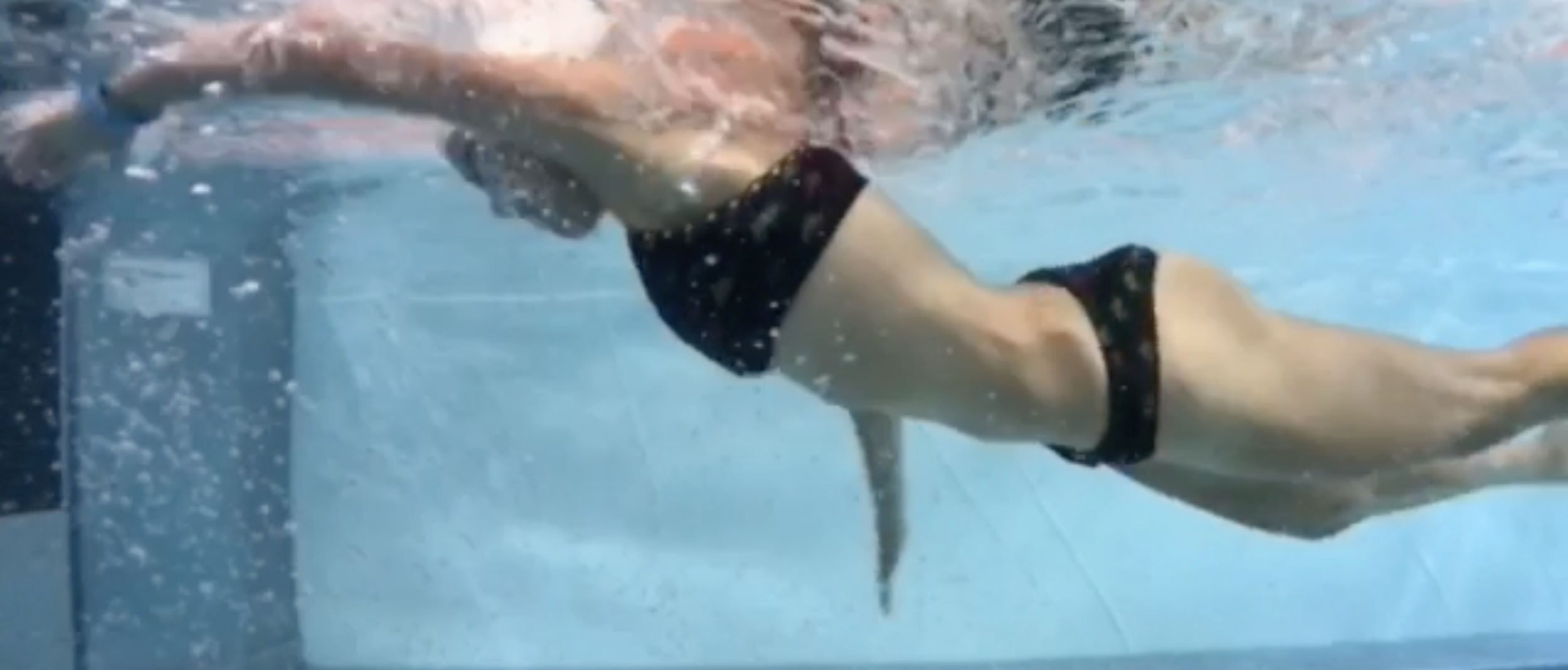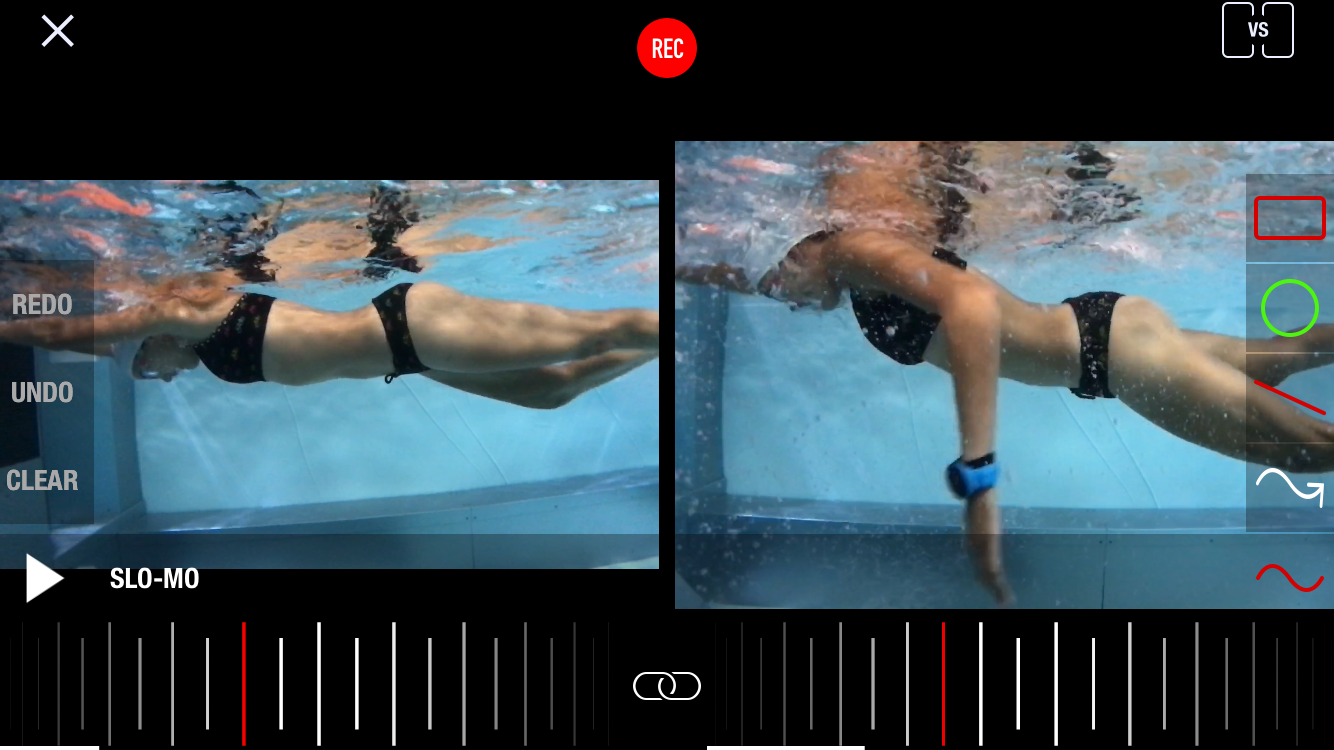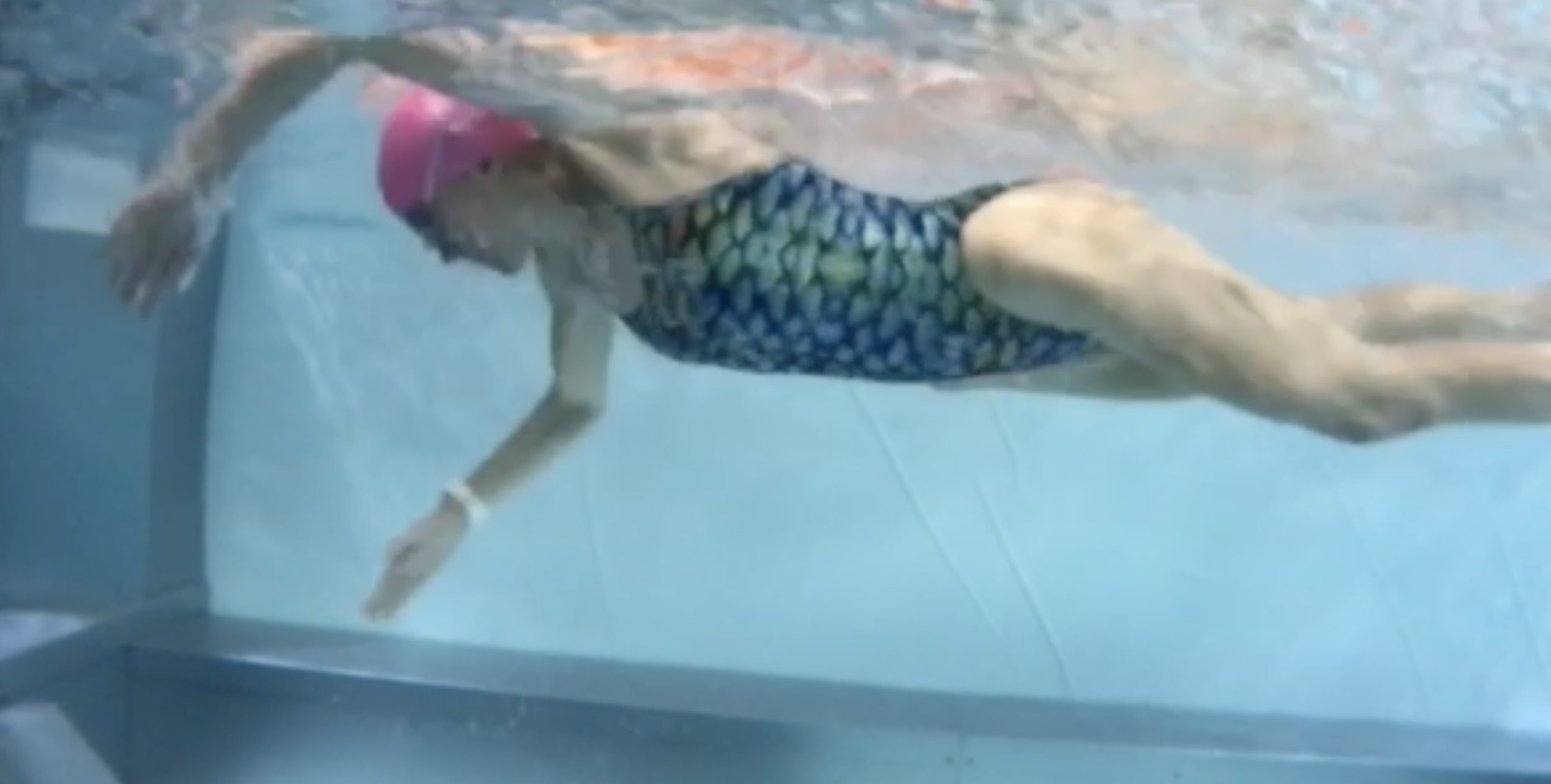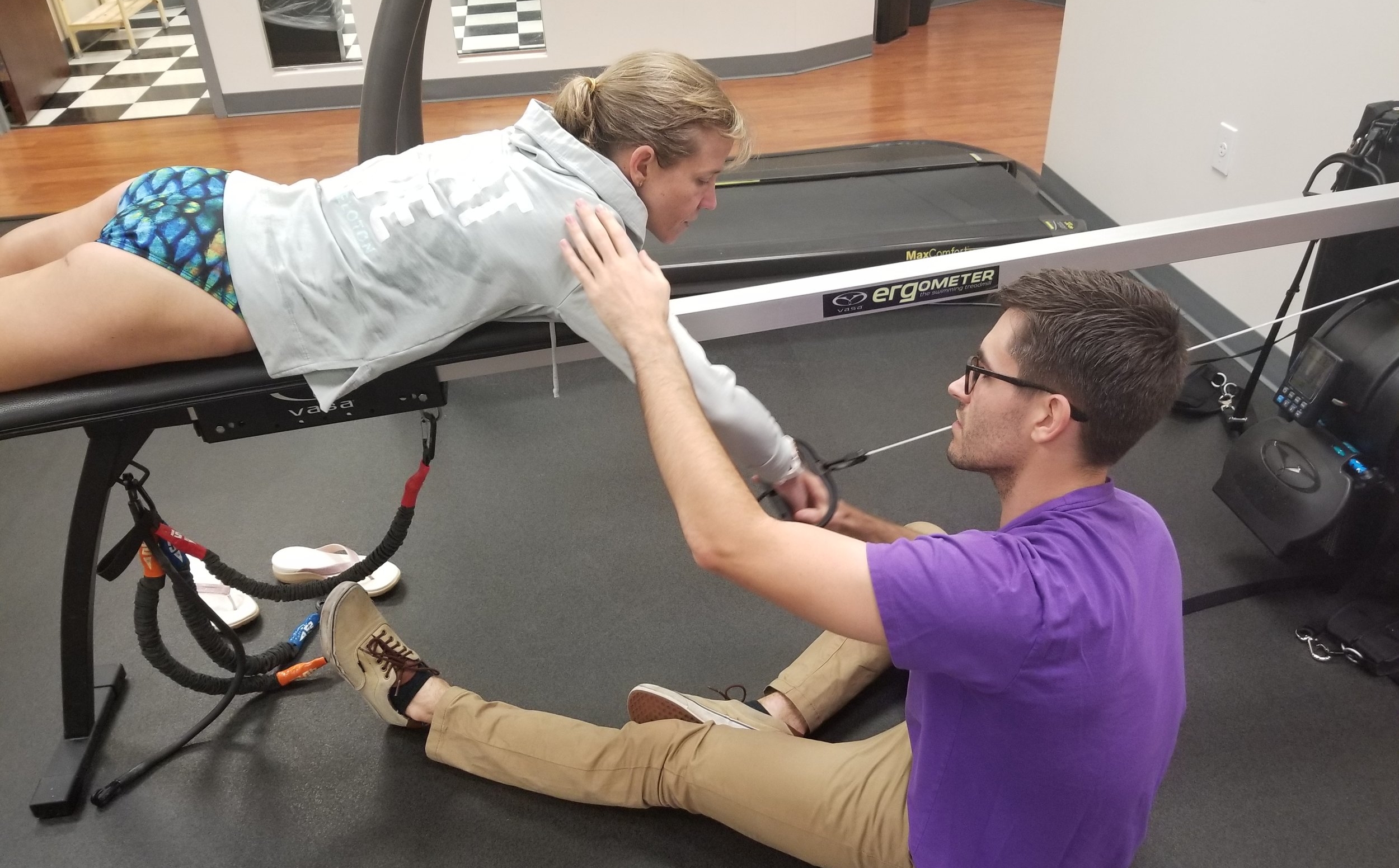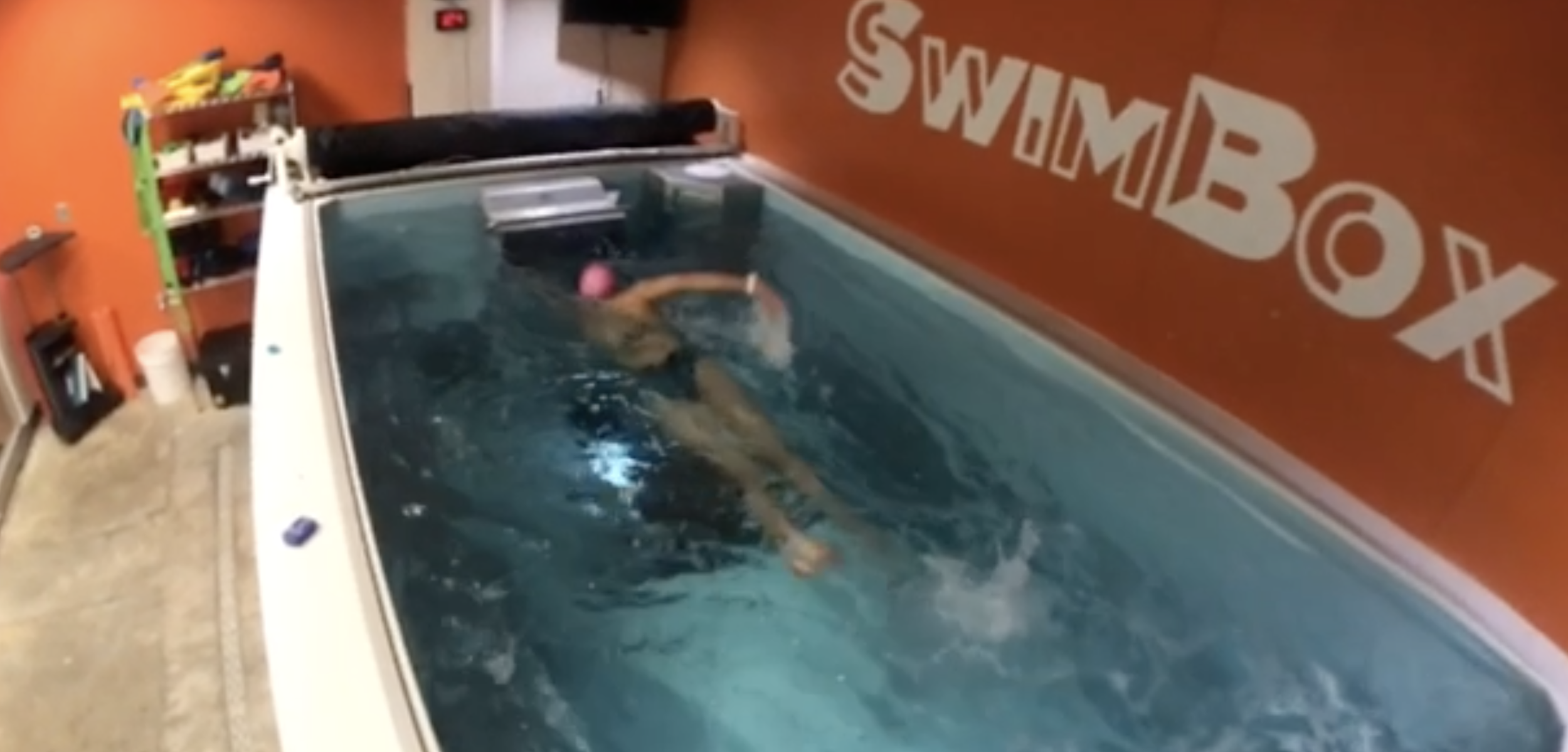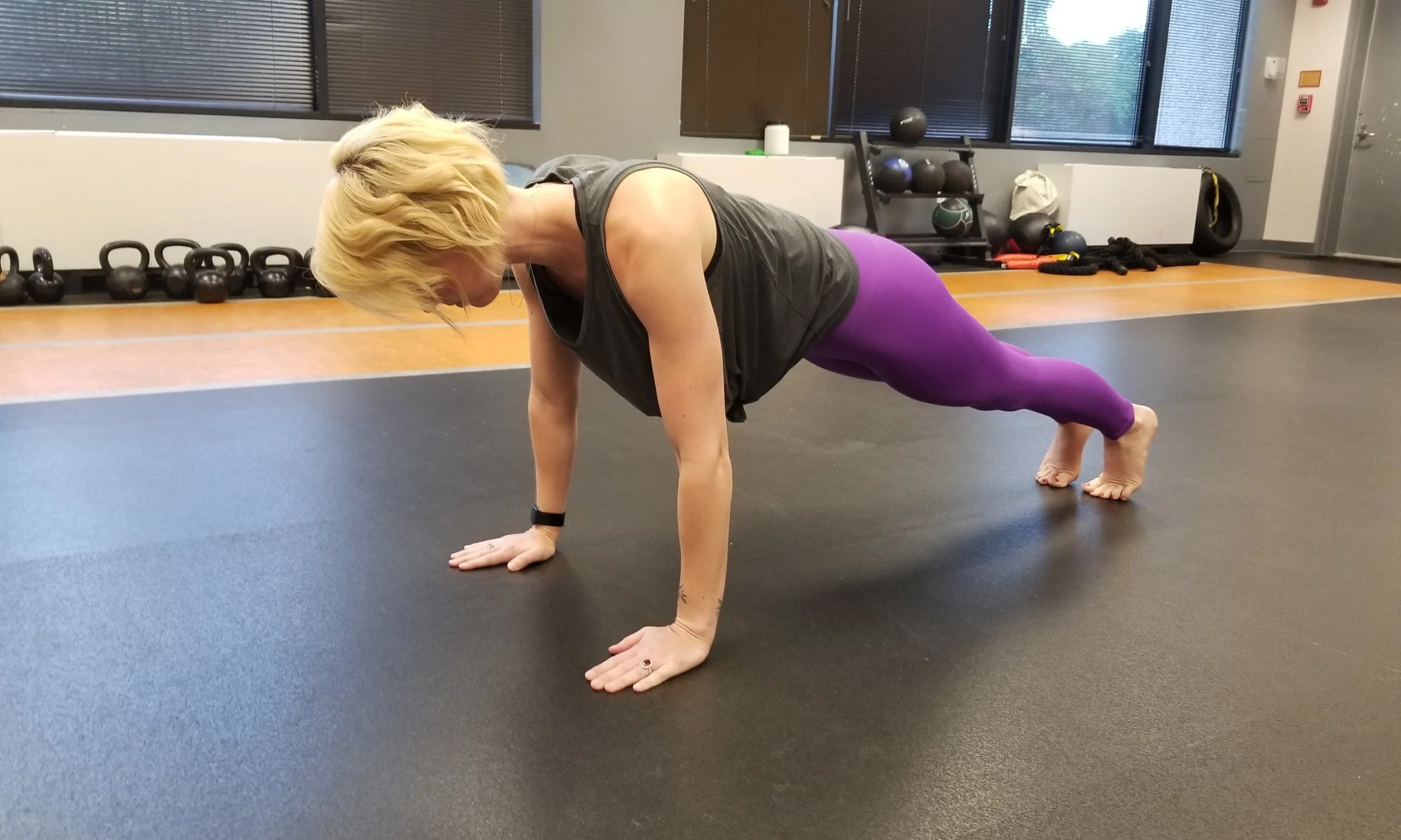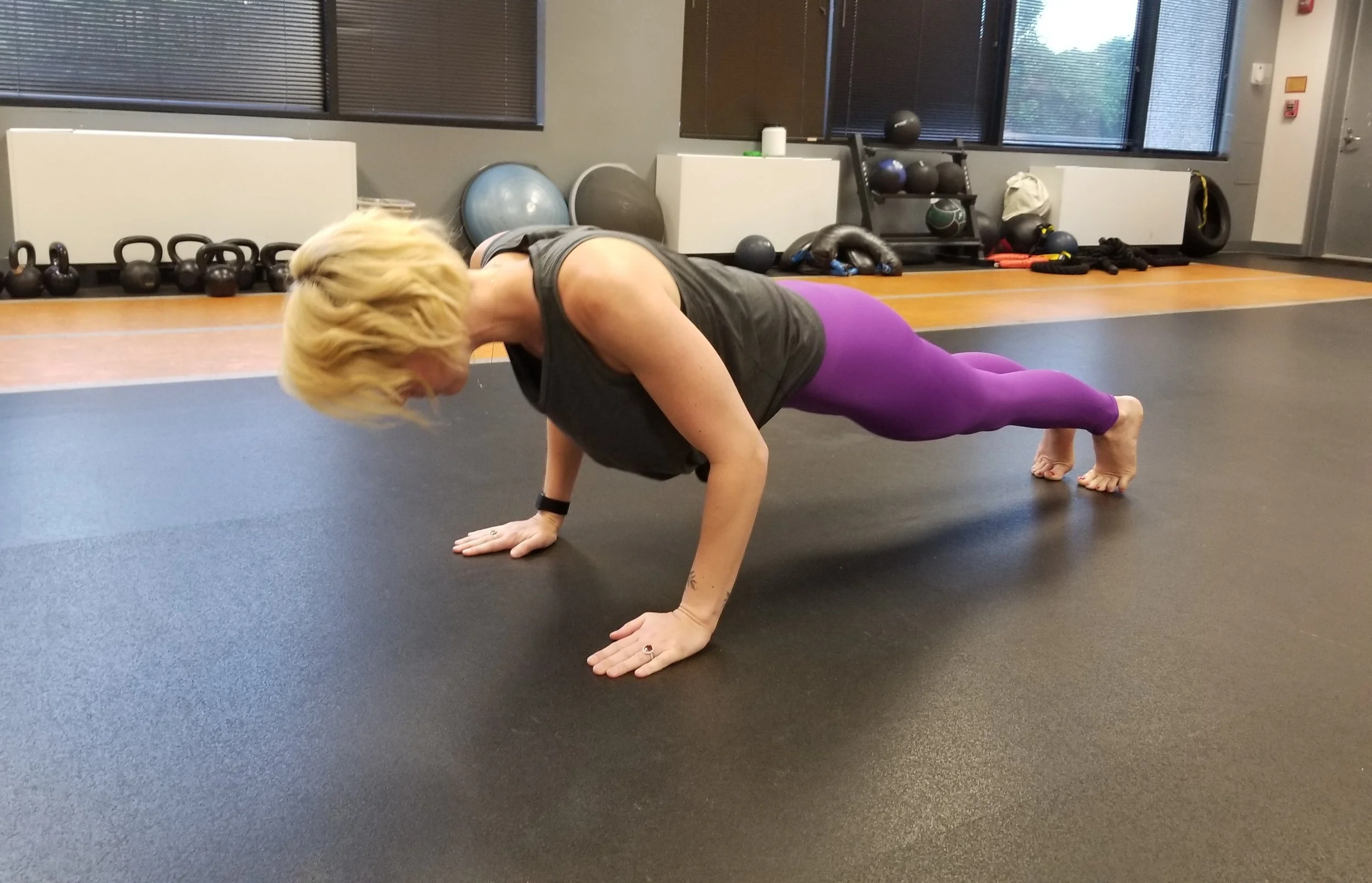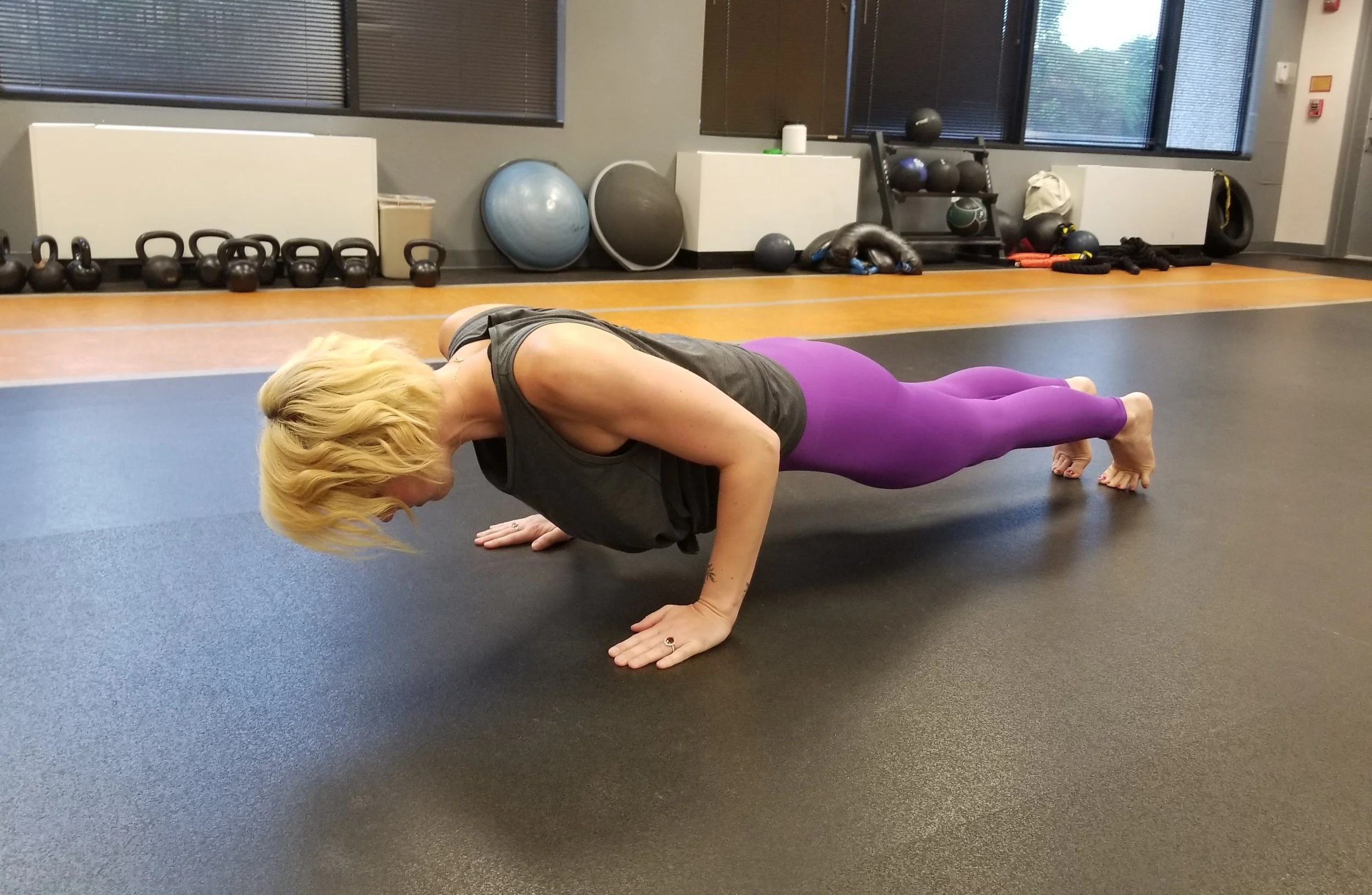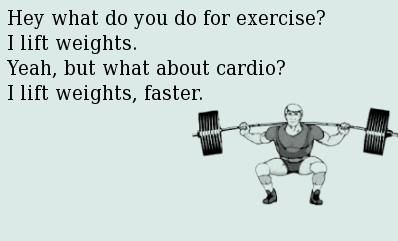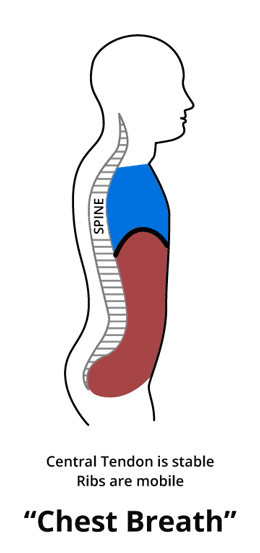In case it's not clear at this point, these ladies are really dedicated to improving their swimming! We've been seeing them as close to once a week as all of our schedules will allow, and both Katie and Flaca are making huge improvements to their stroke technique with our swim lessons and work on the Vasa Trainer SwimErg. If you haven't already make sure to check out the breakdown of Flaca's lesson from last week here to read about her work on elbow position and timing of her catch.
The main focus of Katie's lesson this week was on her finish and recovery. With so much emphasis on having and maintaining a proper catch position, the finish of your stroke into your recovery is often an overlooked aspect of freestyle. In order to fully benefit from the propulsion you get from your catch and pull, you need to keep your palm facing backwards and make a "J" shaped movement from the finish of your stroke into your recovery. For clarification, the recovery is the portion of your stroke from when your hand exits the water after you finish your pull to when you place your hand back in the water to start your next catch. Essentially, the entire time your arm is out of the water is your recovery.
To practice and gain better understanding of the "J" shape we're looking for, Dan had Katie work on just the finish of her stroke without actually making any full stroke movements. Lying face down in the water with her hands at her sides, Katie made an egg beater motion with each arm, only pushing backwards and slightly out using her forearm and hand. Dan has his hand in the water to give Katie something to aim for in order to give her direction as to where we want her to finish her stroke.
It's commonly thought that you want to pull back and finish your stroke in a straight line. And in a perfect world, that would make sense. BUT, because your hips are rotating during the entirety of your stroke, it pulls your arm and hand inward towards your body. This movement prevents you from pulling back in a straight line, and will even result in recoveries starting behind you or stacked directly on top of your torso. We use the "J" shape movement to keep your paddle in a straight line and to keep your palm facing back - not up towards the surface - in order to connect the fluid motion into your recovery. The finish of your stroke, the "J" shape, is the beginning of your recovery.




